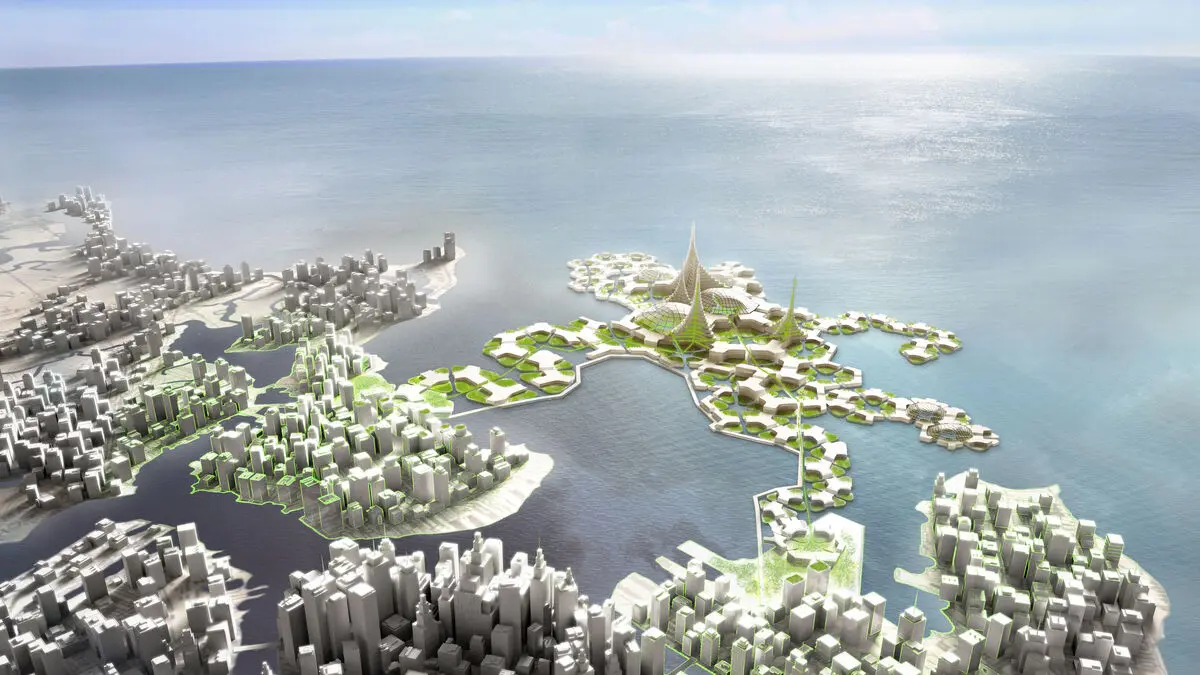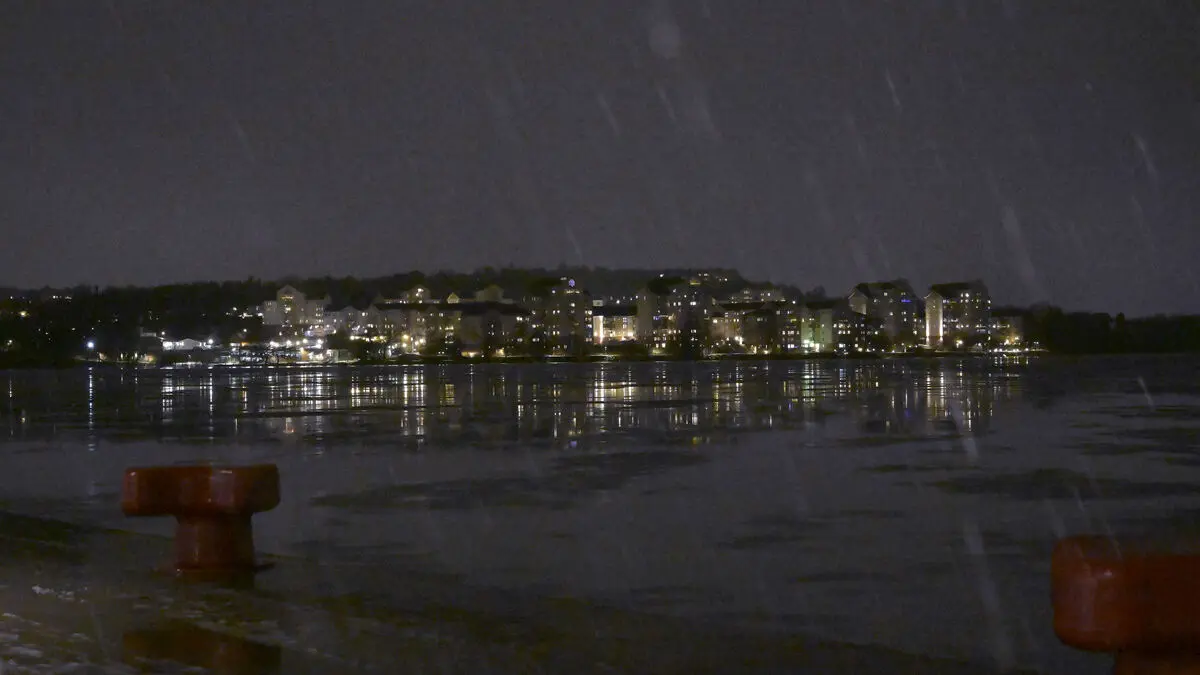Two-meter-high glass windows let in plenty of light into the stylish living room. Outside, the water ripples in the small pond. Martha Vintges and Gert Engbers have lived here since 2013, in a floating villa in the Dutch city of Delft.
We are interested in modern design, sustainability and the problems we have in the Netherlands with lack of space. We were looking for an adventure – which we found, says Martha Vintges.
The light that reflects on the surface and penetrates from almost all directions makes it special to live on the water. And the hassle. It hasn't been super easy to settle in a floating house as pioneers, the couple notes.
Vulnerable
In another part of Delft is the technology company Blue 21, which specializes in floating buildings. A large part of the Netherlands is below sea level and the country has defended itself against the sea for centuries, usually with various types of dams and embankments.
CEO Rutger de Graaf has long wondered whether there is another way to tackle the problem.
"Most cities in the world are located along the coast. Space is often scarce, and as they grow, areas often become vulnerable to flooding. Our option allows cities to expand on the water, and to allow cities to adapt and become more resilient to extreme weather events," he says.
The company is involved in a wide range of projects around the world, not least in Rotterdam, a short train ride away. The city is sandwiched between Europe's largest river delta and the North Sea. In 1953, parts of the city were submerged when the country was hit by a flood disaster, killing 1,800 people.
Cows on the water
Rotterdam has become a test bed for floating structures, including a cow barn, housing and a floating small park.
The city's plans include not just floating homes, but large-scale apartment complexes, says de Graaf.
Blue 21 has been involved in a domed pavilion in the city, which is used for various events.
It was the first large-scale public building in the world to float. It is not connected to the sewage system, but manages and purifies its own water.
Architect Albert Takashi Richters works in the Floating Office Rotterdam, which he and the Powerhouse agency helped design. The three-story wooden building is held in place by two large pillars, and rises or falls 1.5 meters per day due to the tide.
We wanted to build a very elegant building that shows how you can build extremely sustainably.
One half of the roof is covered with solar panels, the other is an energy-efficient green surface that absorbs rainwater and acts as a sound absorber. The water itself is used to cool the building on hot summer days and heat it in winter.
Powerhouse usually designs buildings on land. Despite this, the process went smoothly, says Takashi Richters.
We delivered in roughly 18 months from the first draft to the building being weatherproofed. It was a big challenge, but it is doable. We used a modular system that is easy to recreate.
“Too much freak show”
In an unassuming residential area in Rijswijk, Waterstudio has its office. In contrast to the surroundings, the visions created here are all the more breathtaking. A large map shows a lagoon in the Maldives, where 5,000 floating homes form intricate patterns between the surrounding sand dunes of the atoll.
We are actually building the first 60 now in Sri Lanka that will be towed over, says CEO and founder Koen Olthuis.
With hundreds of floating buildings in its portfolio, Waterstudio has had a hand in various floating projects for almost a quarter of a century.
"But it's too much of a crazy architectural freak show. It's nice, floating villas, but it's not the answer to climate change or urban congestion," says Olthuis.
He is convinced that floating high-rise buildings within cities are the future.
"One of the advantages of floating buildings is that we don't have to leave them there forever. We can move them after ten to fifteen years," he says.
Long-standing projects also include luxury hotels in the Middle East, housing for care workers in Norway and a public utility project in Zwolle, with units of 45 homes each.
In general, however, he believes that it is Asia, with low-lying cities like Manila and Jakarta, that will embrace floating buildings for reasons of survival.
Europe has become a bit lazy, they don't accept innovations as much as they should, he believes.
“We were guinea pigs”
Back in Delft at Martha Vintges and Gert Engbers', the couple recounts the challenges they have faced. Such as having to regularly send divers under the house to remove sediment that accumulates. Because if the building reaches the bottom, it could end up on the verge of collapse.
It has also been difficult to find tradespeople such as plumbers and electricians, as they are not used to working on water. Elsewhere, authorities are grappling with regulations – is it a building or a boat, and if so, what applies?
We were guinea pigs. The municipality was very proud to have floating houses, but we had to do all the work ourselves, says Martha Vintges with a laugh.
Architect Albert Takashi Richters at the floating office in Rotterdam is unsure whether the future is floating, possibly in some parts of the world.
I'll be honest. Have we built more projects like this? No. Is it smart to build everything on water? No, I wouldn't say that. So from that perspective, this is mainly a symbolic gesture.
There are also a lot of floating buildings in Sweden, not just in the form of houseboats.
They are located in Nacka, Karlstad, Västervik, Kalmar and Malmö, among others.
However, the overall housing authority, the National Board of Housing, Building and Planning, has no information on how many homes there are, or what the interest in the housing type is.
Source: Lund University, Swedish National Board of Housing, Building and Planning





